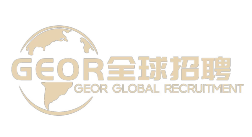Enterprise transnational talent introduction strategy: scientific planning of the core path of recruiting foreigners
The whole strategy for enterprises to attract talents from abroad: the core path of scientific planning for recruiting foreigners
Under the background of intensified global competition, the introduction of foreign talents with international vision and professional skills has become a key strategy for enterprises to break through technological bottlenecks and expand overseas markets. However, the recruitment of foreigners involves multiple challenges such as legal compliance, cultural adaptation, and management integration. This paper provides a systematic solution for enterprises from demand analysis to long-term retention.
1. precise positioning: defining the core objectives of recruiting foreigners
1. Job Value Assessment
Three questions need to be answered before recruitment: Does the job have to be held by foreign talents? Can local talent be replaced by training? What irreplaceable value can foreign employees bring to the enterprise? For example, multinational companies need compliance officers who are familiar with international regulations, while cross-border e-commerce companies may even need operational experts with multilingual skills.
2. Cultural Adaptability Analysis
The working styles of employees in different countries are significantly different:
- Nordic employees : pay attention to work-life balance, the decision-making process tends to be democratized;
- Japanese employees : emphasize the concept of hierarchy and collective honor;
- Indian employees : good at multitasking but relatively flexible in the concept of time.
Companies need to assess whether candidates are compatible with the team culture through behavioral interviews.
2. Compliance Framework: Building a Legal Risk Firewall
1. visa and work permit management
different countries have different access policies for foreign employees, which requires special attention:
- visa type matching : different applicable scenarios such as skilled immigration, internal transfer, freelance visa, etc;
- employer qualification examination : some countries require enterprises to register capital, industry qualification or the proportion of local employees;
- quotas and priority areas : for example, Australia gives priority approval to foreign employees in industries in short supply such as medical treatment and engineering.
it is recommended that enterprises establish a visa management ledger and plan the renewal or transfer path 6-12 months in advance.
2. Localization of labor contracts
The terms of the contract need to take into account international practice and local law:
- Compensation structure : clarify the currency type and payment method of basic salary, bonus and welfare;
- termination clause : set reasonable probation period, notice period and liquidated damages standard;
- dispute resolution : agree on the arbitration institution or jurisdiction to avoid the risk of cross-border litigation.
3. and efficient recruitment: expanding international talent channels
1. Accurate reach in vertical fields
- industry community : Participate in international technology forums and professional association activities to directly connect with target groups;
- University cooperation : Establish internship bases with top overseas universities, lock in potential talents in advance;
- internal recommend : encourage employees to recommend candidates who conform to cultural values and reduce adaptation risks.
a technology company successfully recruited 3 doctors in AI field by jointly holding a hacker marathon with the national university of Singapore.
2. Cross-cultural interview skills
- language proficiency test : in addition to English, assess the level of minor languages according to business needs;
- scenario simulation : design cross-cultural conflict scenarios and investigate strain and communication skills;
- cultural sensitivity assessment : judge its tolerance to multiculturalism through case analysis.
For example, the question may be: "How can the differences between the Chinese team and the US headquarters on project priorities be reconciled?"
4. integration management: improving the retention rate of foreign employees
1. Customized onboarding support
- acculturation course : introduce corporate values, communication style and decision-making process;
- language training : provide basic Chinese courses or translation services to reduce daily communication barriers;
- mentor system : provide senior local employees as mentors for foreign employees to accelerate their integration into the team.
2. Long-term development incentives
- career path planning : design clear promotion channels to avoid promotion bottlenecks due to cultural differences;
- differentiated benefits : provide additional support in housing subsidies, children's education, family leave, etc.;
- cultural identity construction : enhance the sense of belonging through international cultural festivals, cross-sectoral collaboration projects and other activities.
a manufacturing enterprise provides a "family care plan" for foreign engineers, including spouse employment assistance and tuition subsidy for international schools, increasing employee retention rate by 40%.
5. risk prevention and control: common problems and coping strategies
1. cultural conflict handling
- direct communication ≠ disrespect : some foreign employees are used to expressing their opinions directly and need to guide local teams to understand their communication style;
- differences in decision-making efficiency : german employees may delay progress due to the pursuit of perfection. Milestone management is required to balance efficiency and quality.
2. Compensation and Tax Compliance
- Exchange Rate Fluctuation Risk : Adopt the structure of "Basic Salary + Performance Bonus, reduce the impact of exchange rate fluctuations on real income;
- double taxation avoidance : use tax treaties to apply for foreign income tax credits to avoid double taxation.
Conclusion
Recruiting foreigners is an important part of the global layout of an enterprise, but it needs to be based on compliance, cultural integration and long-term value. Through systematic process design and refined operation management, enterprises can not only attract international talents, but also transform them into lasting driving force for business growth. From demand analysis to risk prevention and control, every step needs to be carefully planned in order to take the initiative in cross-border talent introduction.
